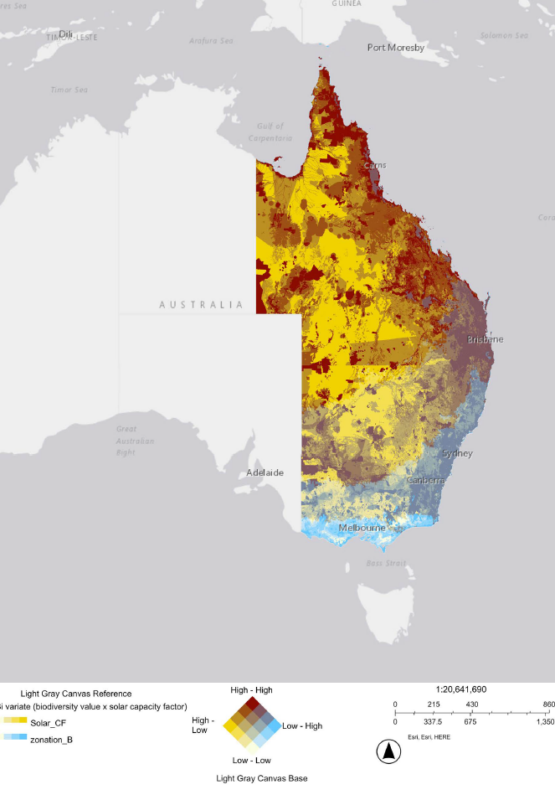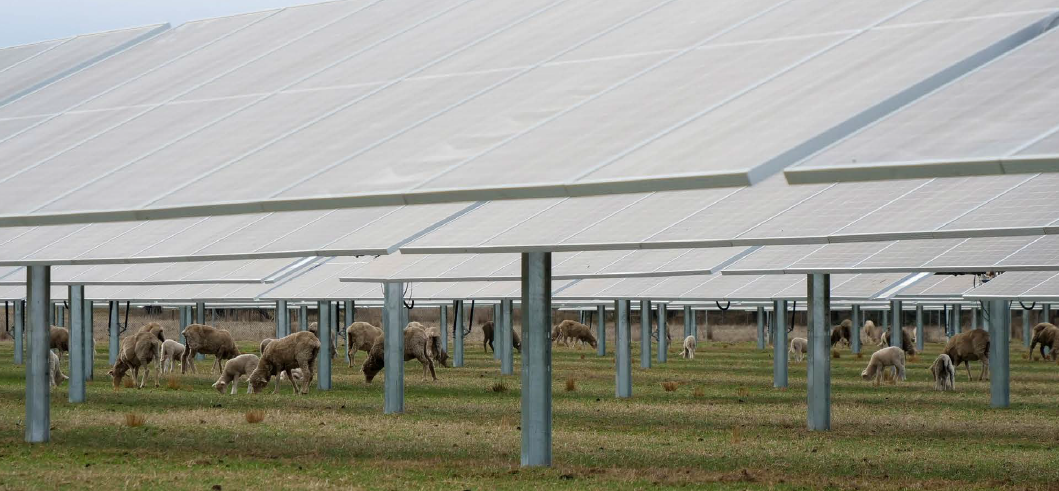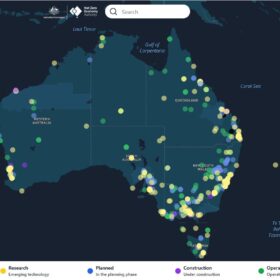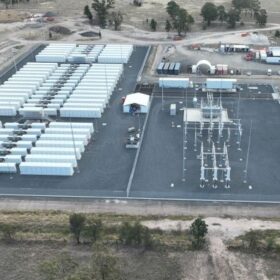Conservation organisations, Australian Conservation Foundation (ACF) and World Wide Fund for Nature (WWF)-Australia call for renewable energy projects to be built away from high conservation value areas, in a new report outlining a path for a clean energy future that protects nature.
The report, Our Renewable Future – a Plan for People and Nature outlines key energy transition steps government, industry and communities can take that avoid and minimise impacts, while improving nature overall.
The report concludes, renewable projects must be built in the right places with buffer zones to protect nature and “no-go” zones to include national parks, world heritage areas and key biodiversity areas.
“Environmental values need to become a higher priority in grid and network planning to ensure, over the next two decades, we build smart and think ahead about where our energy resources will need to come from to avoid land use conflicts,” the report says.
“Historically, energy infrastructure has been built based primarily on economic and technical efficiencies, rather than early consideration of where projects can access already cleared and degraded land.”

Image: Australian Conservation Fund
Mapping projects that identify that type of land are underway, including a joint initiative between the ACF and the University of Melbourne, proving developments can avoid high biodiversity conservation value areas.
It finds degraded land could be prioritised for development, along with investment in local energy solutions, and embedding biodiversity gains into every project.
WWF-Australia Chief Executive Officer Dermot O’Gorman said renewables – built in the right places – can not only co-exist safely with nature, but help nature and people thrive.
“We must rapidly invest in and deploy renewables to meet the scale and intensity of the climate crisis,” O’Gorman said.
It also calls on governments to invest in local energy hubs to support communities.
RE-Alliance National Director Andrew Bray said local energy hubs are the most practical way the federal government can invest in the information, capacity and tools that communities badly need to ensure that projects contribute to thriving local economies and resilient ecosystems.
Agrisolar
The report advocates for agrisolar projects on the back of an anticipated $9.7 to $11.7 billion (USD 5.8-7 billion) delivered by renewable energy projects in landholder payments and regional community contributions between 2024 and 2050.
Further benefits of agrisolar are outined in terms of increased livestock and crop yields because of agrivoltaic installations, citing additional data from a 2024 Farms for Climate Action (FCA) and Clean Energy Council (CEC) report, which showed farmers can earn up to $1,250 per hectare from solar installations.
The report recommends to the renewable energy industry that avoiding areas like national parks, world heritage and key biodiversity areas, wetland or locations critical to the survival of threatened or endangered species means developments can help protect nature.
The authors ask every project create net gains and positive outcomes for nature and that communities, businesses and governments are included in partnership with projects, to deliver lasting benefits for people and the environment.
Community Power Agency Regional Partnerships Coordinator Heidi McElnea said the report’s plan will help guide the energy transition in a way that benefits nature and local communities.
“By working together, there are huge opportunities to build projects that will reduce emissions and contribute to the restoration of our natural landscapes.”
This content is protected by copyright and may not be reused. If you want to cooperate with us and would like to reuse some of our content, please contact: editors@pv-magazine.com.









I think statements around avoiding National Parks and World heritage areas are a bit blase, the states already do that. Permits for those areas would not be issued in any case.
What is needed is real visionary and long term thought from our politicians.
Each state should be looking at designating an area/s that can be developed. I am thinking in Victoria of some of the huge areas of limited agricultural value in the northern Mallee and/or potentially some of the salt affected areas around Cohuna and Swanhill. The land needs to be in general proximity to the National Grid.
Do purchases, at above real estate values of (say) a million hectares in total, lease back to farmers/graziers that land not immediately required for use.
Construct a central ‘Hub’ with infrastructure connected to the National Grid and survey and construct internal road networks. Then, as each proposal for a solar farm comes in, its a simple ‘How many hectares do you need?’ OK, here is block a,b,c, accessed via x,y,z.
Having all solar farms co-located would streamline a one-off planning process, would encourage specialist staff to relocate to that area with a long-term security of work, (leading to regional development, additional houses, schools, shops, medical centres etc. in local town/s).
There must be economies of scale for production and maintenance, having specialist staff already there, having planning already completed, having a central hub to connect to, etc.
Establish a low fuel buffer zone right around the locality to reduce chances of wildfire impacting.
All solar farms to be built to an agreed industry standard of heights and spacings between rows to facilitate regular panel cleaning/repairs as needed etc.
All that’s needed really is a Government that looks beyond single term ‘getting re-elected’ and has enough long term vision to set each state up for the (very) long term and move away from ad-hoc smallish scale development, quite often located on valuable agricultural land.
Tie east and west Australia together via a reliable electric grid also linking each states designated solar site/s.
The time frame between the sun rising in the east and setting in the west is actually fairly short and Wind farms and pumped hydro and grid scale batteries should be able to bridge that remaining gap.
We can throw a Billion dollars at a football stadium? We can invest in hundreds of billions for Nuclear Submarines? We mutter ad-nauseum about Nuclear reactors also for Billions. Why oh why can’t we get a clear strategy for solar development?